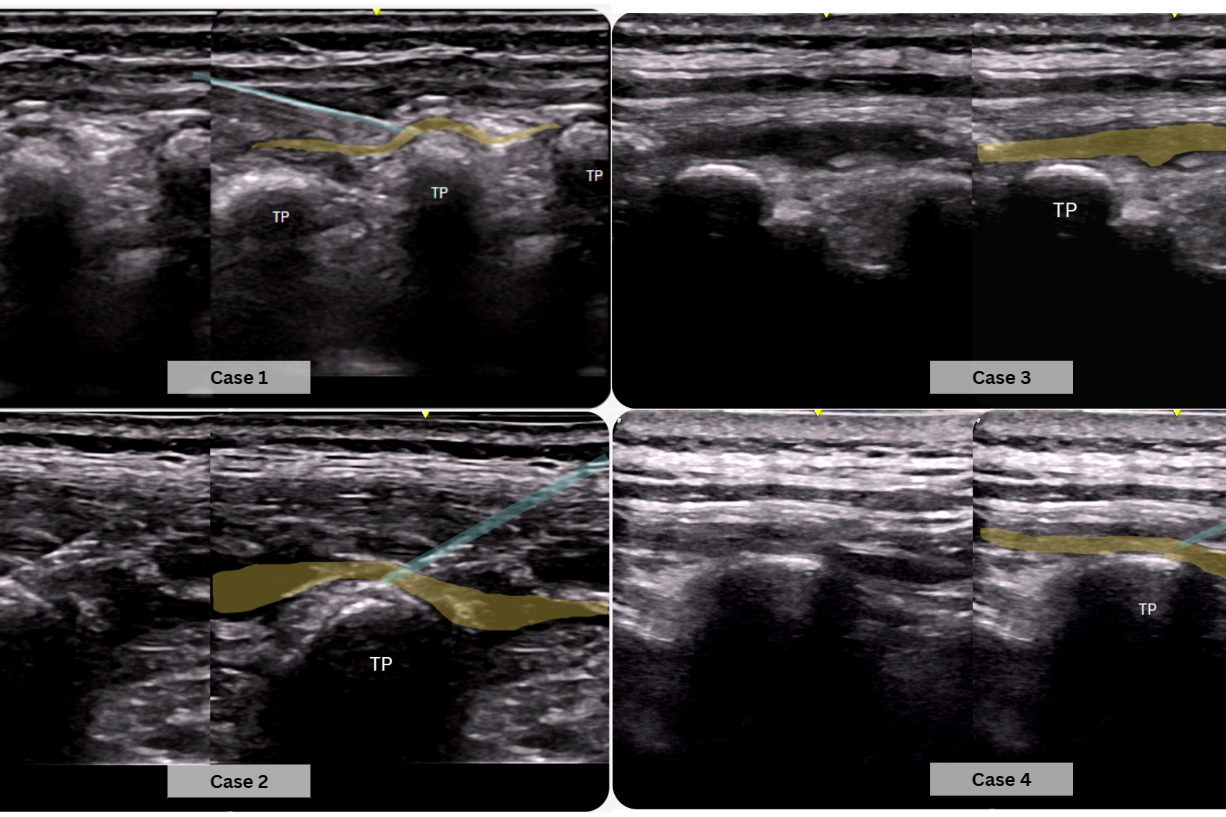Keywords
Abstract
Erector spinae plane block (ESPB) was first described in 2016 by Forero et al. as a modified interfascial plane block used for patients with chronic neuropathic thoracic pain. It was applied in the paediatric population for postoperative pain management as early as 2017. Most evidence on the efficacy of ESPB as postoperative analgesia in the literature is mainly found in case reports, but very few trials had been conducted. This case series describes 4 paediatric patients who received ESPB as part of multimodal analgesia while undergoing different types of surgery,i.e., 1 Kasai procedure, 1 closure of stoma, and 2 thoracotomies. All 4 patients had general anaesthesia for the surgery. No complications were observed in relation to the regional anaesthetic technique. Pain control was achieved with a pain score of 0–2 for 3 patients and 2–4 for 1 patient (thoracotomy) on Day 1 postoperatively, while all of them a had pain score of 0–2 on postoperative Day 2. We found ESPB with ropivacaine 0.2% to be a safe and effective analgesia as part of multimodal management of postoperative surgical pain. Further studies are needed to validate this observation.
References
Forero M, Adhikary SD, Lopez H, Tsui C, Chin KJ. The erector spinae plane block: a novel analgesic technique in thoracic neuropathic pain. Reg Anesth Pain Med. 2016;41:621-627. https://doi.org/10.1097/AAP.0000000000000451
Ecoffey C, Lacroix F, Giaufré E, Orliaguet G, Courrèges P; Association des Anesthésistes Réanimateurs Pédiatriques d’Expression Française (ADARPEF). Epidemiology and morbidity of regional anesthesia in children: a follow-up one-year prospective survey of the French-Language Society of Paediatric Anaesthesiologists (ADARPEF). Paediatr Anaesth. 2010 Dec;20(12):1061-9. https://doi.org/10.1111/j.1460-9592.2010.03448.x
Aksu C, Gurkan Y. Defining the Indications and Levels of Erector Spinae Plane Block in Pediatric Patients: A Retrospective Study of Our Current Experience. Cureus. 2018;11(8):e5348. https://doi.org/10.7759/cureus.5348
Elkoundi A, Bentalha A, Kettani SEE, Mosadik A, Koraichi AE. Erector spinae plane block for pediatric hip surgery - a case report. Korean J Anesthesiol. 2019 Feb;72(1):68-71. https://doi.org/10.4097/kja.d.18.00149
Lucente M, Ragonesi G, Sanguigni Met al. Erector Spinae Plane Block in Children: a Narrative Review. Korean J Anesthesiol. 2022 Jul 5. https://doi.org/10.4097/kja.22279
Aksu C, Şen MC, Akay MA, Baydemir C, Gürkan Y. Erector Spinae Plane Block vs Quadratus Lumborum Block for pediatric lower abdominal surgery: A double blinded, prospective, and randomized trial. J Clin Anesth. 2019 Nov;57:24-28. https://doi.org/10.1016/j.jclinane.2019.03.006
Ayub A, Talawar P, Kumar R, Bhoi D, Singh AY. Erector Spinae Block a safe, simple and effective analgesic technique for major hepatobiliary surgery with thrombocytopenia. Egyptian Journal of Anaesthesia. 2018 Oct;34(4):169–72.
Ministry of Health Malaysia. Pain as the 5th Vital Sign Guideline: 3rd Edition [Internet]. 2018. Available from: https://www.moh.gov.my/moh/resources/Penerbitan/Program%20Bebas%20Kesakitan/Garis%20Panduan/2_in_1_P5VS_Guideline_3rd_Edition_Corrected_2020.pdf
Epidural Anaesthesia in Children [Internet]. WFSA Resource Library. [cited 2024 Mar 16]. Available from: https://resources.wfsahq.org/atotw/epidural-anaesthesia-in-children






